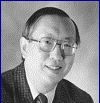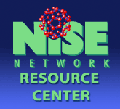Education Center
Nanotechnology is a multidisciplinary field of discovery. Scientists working in physics, chemistry, biology, engineering, information technology, metrology, and other fields are contributing to today's research breakthroughs.
- The worldwide workforce necessary to support the field of nanotechnology is estimated at 2 million by 2015. How does the U.S. educational system train these workers and how do students choose the appropriate educational path for their interests?
- As in other fields, a passion for science is developed while students are young and an introduction to the many facets of nanotechnology will provide the basis for future educational opportunities.
- Curricula development is beginning and is available for K-12 and undergraduate education. Right now, however, only few degree programs in the field are available nationwide (and worldwide).
Dr. Robert Chang on Teaching and Learning Nanotechnology
 Robert P.H. Chang, director of the National Center for Learning and Teaching (NCLT), explains the
goals and challenges facing education in the field of
nanotechnology
in an interview with NNCO. Dr. Chang is a
professor of materials science and engineering at Northwestern University.
Robert P.H. Chang, director of the National Center for Learning and Teaching (NCLT), explains the
goals and challenges facing education in the field of
nanotechnology
in an interview with NNCO. Dr. Chang is a
professor of materials science and engineering at Northwestern University.
Nano Teaching Resources Available at NanoEd.org
 Teachers looking for help with nanoscience and technology curriculum can find assistance on the
NanoEd Resource Portal. NanoEd is a "one-click resource" site for finding educational resources and to showcase work to facilitate collaborations within
the Nanoscale Science and Engineering Education (NSEE) community.
Teachers looking for help with nanoscience and technology curriculum can find assistance on the
NanoEd Resource Portal. NanoEd is a "one-click resource" site for finding educational resources and to showcase work to facilitate collaborations within
the Nanoscale Science and Engineering Education (NSEE) community.
The site, sponsored by the National Center for Learning and Teaching in Nanoscale Science and Engineering (NCLT), offers educational resources to help teachers with nanotechnology-related concepts, simulations, and activities for the classroom.
- Educational materials for science teachers and students in grades 7-12, college and university students and faculty, researchers, and post doc students, covering information on Nano Courses & Units in engineering, physics, materials science, chemistry, and education.
- Seminars to advance education initiatives.
- Learning Research and Methods, a collection of papers, presentations and resources to promote the best teaching practices and methodologies.
- Nanoconcepts and Applications, instructional materials focusing on the key ideas in nanoscale science and engineering.
- NSEE Resources and Calendar of Events for nanoscale science and engineering education.
- NSEE News and Network and a Glossary.
NCLT, funded by the National Science Foundation, was established in October 2004 to build national capacity in nanoscale science and engineering education. Housed at Northwestern University, NCLT collaborates with scientists at the following research institutions: University of Michigan, Purdue University, University of Illinois at Chicago, University of Illinois at Urbana-Champaign, Argonne National Laboratory, Alabama A&M University, Fisk University, Hampton University, Morehouse College, and University of Texas at El Paso.
NISE Network
 The Nanoscale Informal Science Education (NISE) Network brings researchers
and informal science educators together to inform the public about nanoscience and technology. Now, through a new Web site, the NISE Network Resource Center, you can access a vast collection of educational resources and even join in this creative community effort.
The Nanoscale Informal Science Education (NISE) Network brings researchers
and informal science educators together to inform the public about nanoscience and technology. Now, through a new Web site, the NISE Network Resource Center, you can access a vast collection of educational resources and even join in this creative community effort.
For teachers, students, or anyone interested in nanoscience and the many potential nanotechnology applications, the Web site's content includes study materials, academic approaches, collections of graphics, a newsletter, links to other institutions working in the field, and much more.
The NISE Network consists of the Museum of Science, Boston, the Exploratorium in San Francisco, the Science Museum of Minnesota and a growing group of partners and advisors. With a five-year, $20 million grant from the National Science Foundation, the NISE Network is working to bring the education and research communities together in an effort to
- create new methods and approaches to communicate the work of nanoscale scientists and engineers
- inform the public about the advances in the scientific research, and
- capture the imagination of youth who may choose careers in nanoscale science and engineering.
Read more about the projects of the NISE Network.
When Things Get Small
 What could a stadium-size bowl of peanuts, a
shrinking elephant and a
crazed hockey player have to do with nanoscience? Those are just some of the goofy excursions that await you when witty host Adam Smith and wacky physicist Ivan Schuller take you on an irreverent, madcap, comically corny romp into the real-life quest to create the smallest magnet ever known.
"When Things Get Small" was funded by the National Science Foundation, and produced by UCSD-TV in partnership with the California Institute for Telecommunications and Information Technology (Calit2).
What could a stadium-size bowl of peanuts, a
shrinking elephant and a
crazed hockey player have to do with nanoscience? Those are just some of the goofy excursions that await you when witty host Adam Smith and wacky physicist Ivan Schuller take you on an irreverent, madcap, comically corny romp into the real-life quest to create the smallest magnet ever known.
"When Things Get Small" was funded by the National Science Foundation, and produced by UCSD-TV in partnership with the California Institute for Telecommunications and Information Technology (Calit2).
See When Things Get Small (Nano fun on TV)
 A five-year goal of the NNI is to ensure that
50% of US research institutions' faculty and students have access to
the full range of nanoscale research facilities, and student access to
education in nanoscale science and engineering is enabled in at least
25% of the research universities.
A five-year goal of the NNI is to ensure that
50% of US research institutions' faculty and students have access to
the full range of nanoscale research facilities, and student access to
education in nanoscale science and engineering is enabled in at least
25% of the research universities.
Mihail C. Roco, NSF Senior Advisor for Nanotechnology.